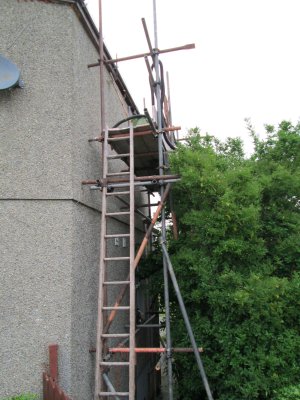
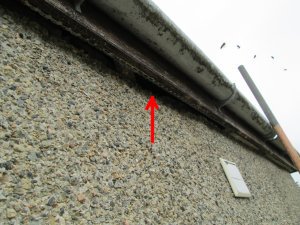
Bee colony cutout at Plas Gwyn Care Home, near Criccieth, 2015
In 2014, a swarm entered the flat roof of the extension to the east of the building. It survived the 2014/2015 winter as it was bringing pollen in on 23 April, long before swarming had started in view of the unusually cold spring. The bees had gained access to the roof through a gap that had opened up between the metal eaves ventilation and the wall.
Below left: the site Below right: the bee nest entrance


After removing the gutter, an approximately 1.2 m fascia was cut away, exposing the ends of three rafters. The nest was to the left of the central rafter shown by the red arrow in the photo below.
Below: the fascia removed
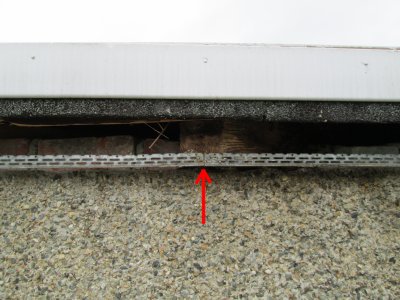
The above photo also shows the improvised eaves ventilation grille which was nailed to the rafter ends, the base of the 'L' section facing inwards. It comprises galvanised steel edging strip of the kind used by plasterers on corners of walls. As the strip did not span the entire gap between the fascia and the wall, the rest of the gap was bridged by a fibrous board, most of which had weathered away round the entire roof eaves, thus creating ample access for insects, rodents etc.
The rafters met the wall obliquely. This rendered access to the full length of the nest difficult. Furthermore, the nest began not by the entrance but about 300 mm into the roof void from it. The nest was considerably longer than the reach of an arm inserted up to the shoulder. The ceiling was insulated with rock wool, which combined with the relatively shallow rafters, created an unusually shallow nest architecture.
The first course of brickwork was removed either side of the marked rafter. It appeared to be serving no structural function.
Below left: the outer end of the nest, to the
left of the rafter marked above
Below right: the right side of the rafter (batten marked)
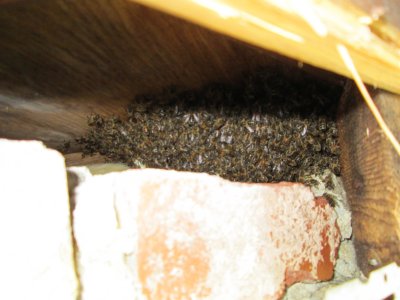
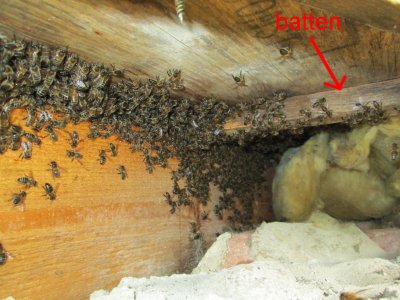
A further feature of this roof was that the roofing board was resting on battens, rather than directly on the rafters. This created access for the bees over each of the rafters, rather than restricting them to a gap between two rafters. This is why the bees at the right edge of the nest are visible at the top of the rafter in the photo above. It was this side of the rafter that was used as the main thoroughfare from the entrance to the nest.
The bees were taken alive into a bee vac.
Below: outer end of nest after taking most of the covering of bees into the bee vac
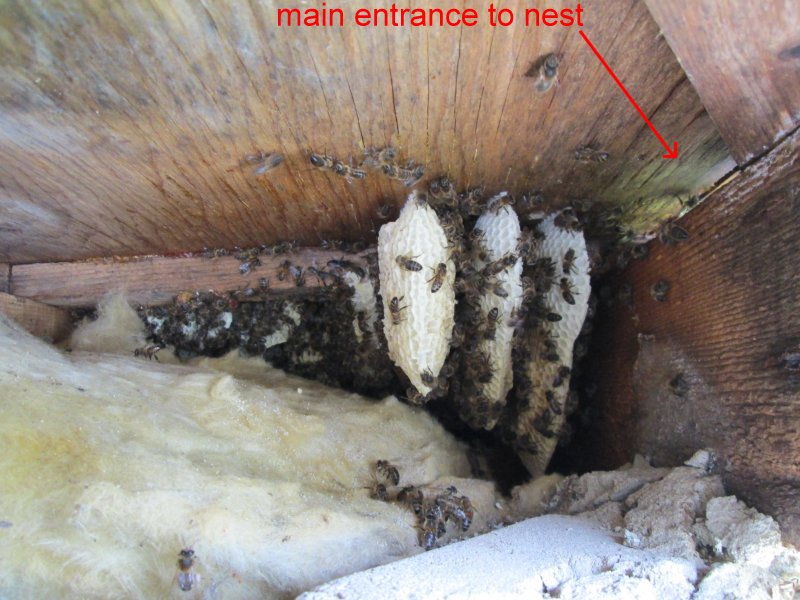
Below: view down the right of the rafter showing several battens between the rafter and the roofing board
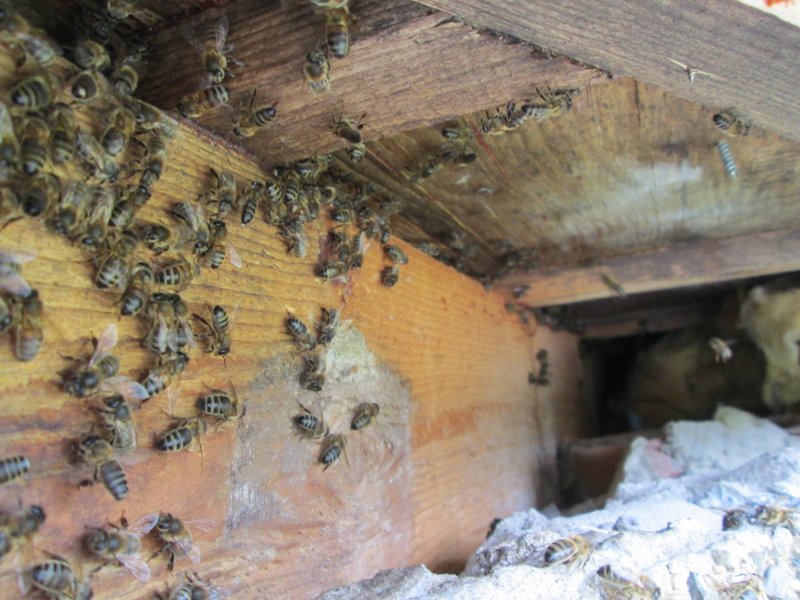
Below: half the comb removed
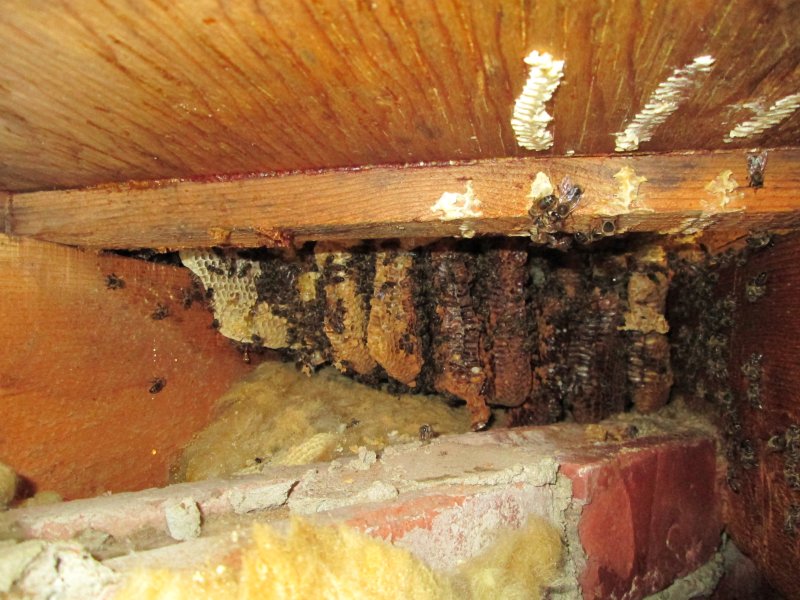
Below: half the comb removed (close-up)
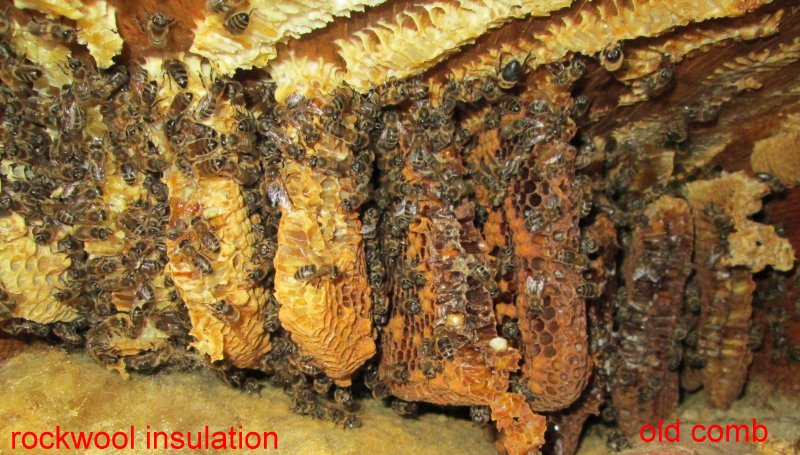
Below: a young (2015) comb and an old comb (2014)
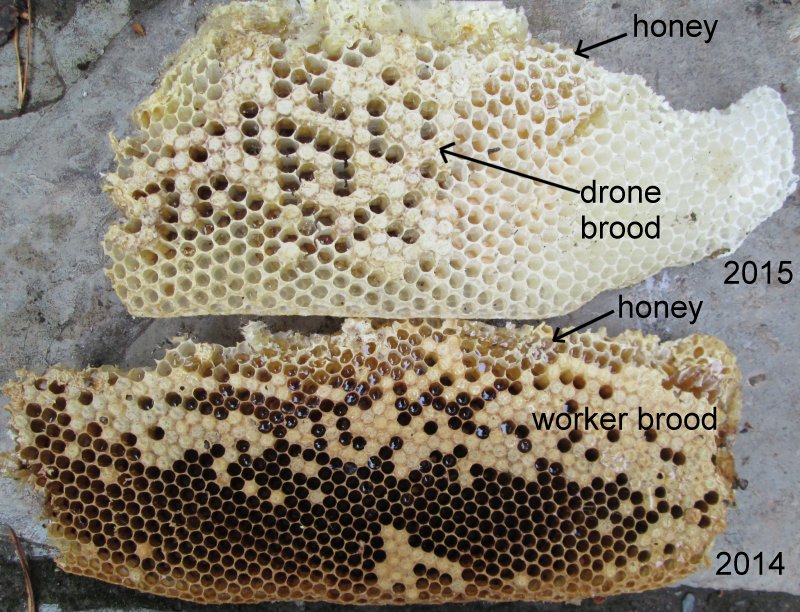
The nest was extraordinarily shallow, the combs being only 110 mm deep. The limitation to the depth was due not only to the rafter depth but also the layer of rockwool insulation on the plasterboard below. The nest width was 380 mm and its length 1000 mm. Its total weight removed was 5.6 kg.
Below: most comb removed
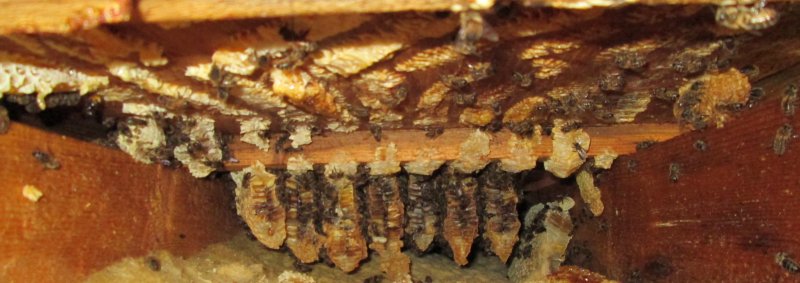
Below: all combs removed
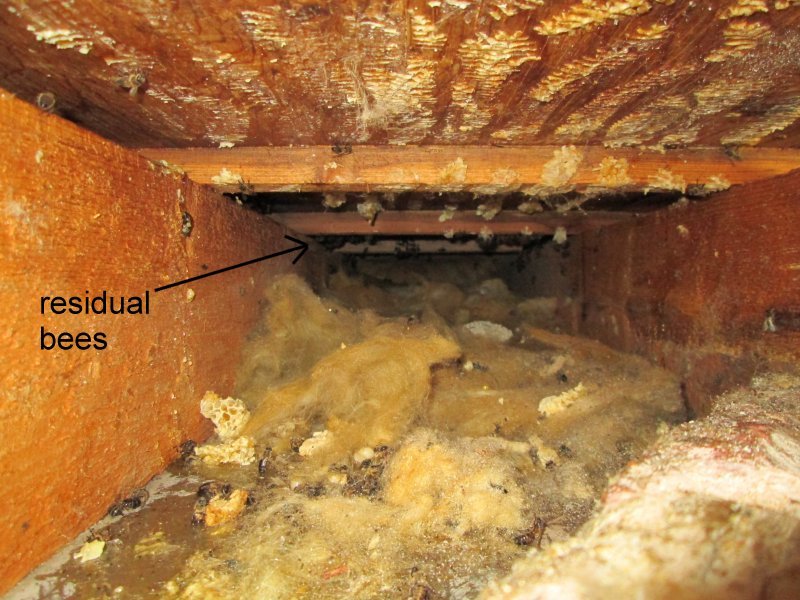
In the above photo a small cluster of residual bees is visible that was out of reach of the bee vac. After a while these bees began running around the cavity looking for the queen. Most were taken into the vac on subsequent visits. The remainder gathered in a small cluster by the original nest entrance and were removed.
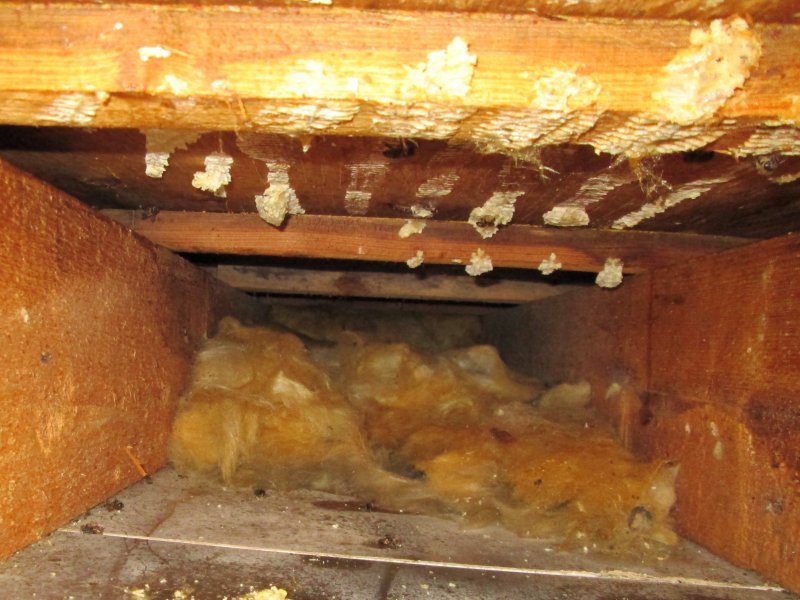
Below: during the honey bee colony extraction the entrance to a bumble bee nest was noticed in the rotten fascia of the front elevation
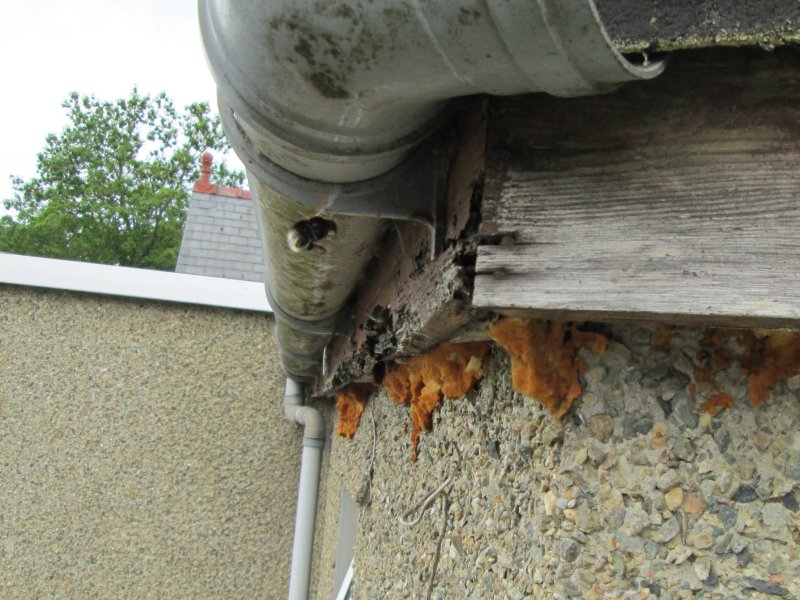
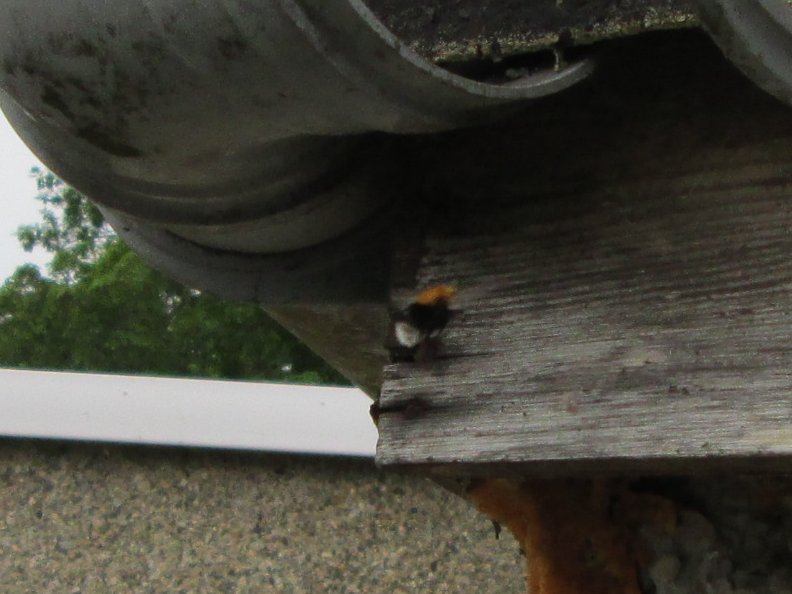
David Heaf's bee removals index